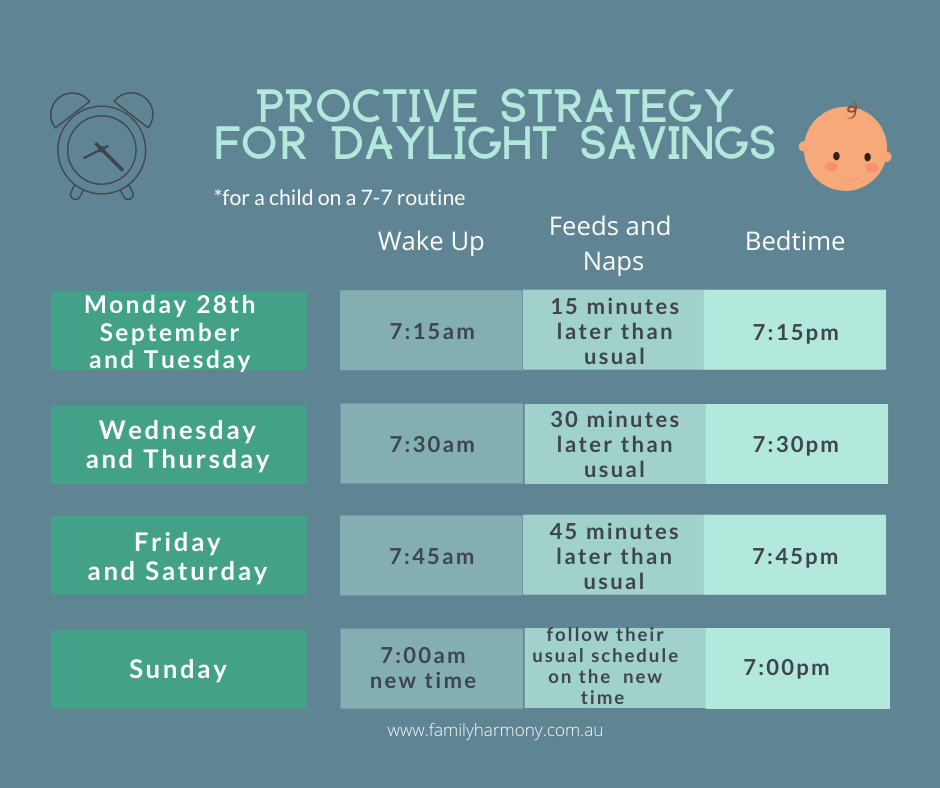If you live anywhere where daylight savings starts on 4th October, I have some tips on how to adjust your child’s routine. (Victoria, NSW, South Australia, Tasmania).
Our bodies take about a week to adjust to a time change.
You can start to prepare your little one the week before daylight savings starts or begin to adjust their routine on the day it starts.
The first way is called the Proactive Strategy. You begin to push their whole routine forward 15 minutes every 2nd day so that when they wake on Sunday 4th October their routine is in line with the new time.
So beginning tomorrow (Monday 28th September) push all sleeps and all food and milk 15 minutes later. On Wednesday push all sleeps and all food and milk 15 minutes later. On Friday push all sleeps and food and milk another 15 minutes later. On Sunday when they wake the time will be moved forward 1 hour due to daylight savings, this is where you push everything forward the last 15 minutes so it lines up with the new time.
If we look at naps to help demonstrate:
If your little one has their nap at 9:30, on Monday push it out to 9:45, on Wednesday push it out to 10:00, on Friday push it out to 10:15, on Sunday push it out 15 minutes so that it would be 10:30 pre-daylight savings time, but 9:30am daylight savings time (new time).
Black out blinds are a wonderful tool. Keep your child’s room so dark that you struggle to read in there, then you can be sure sunlight is not wreaking havoc on their sleep.
The other method is called the Reactive Strategy. You wait until the day daylight savings starts before you make any changes. Then you bring all feeds, naps and wake up time backwards by 15 minutes according to the new daylight savings time. Do this every second day until the routine is as it was before.
So on Sunday 4th October a 9:30am nap will begin at 10:15am new time, then on Tuesday the nap would begin at 10:00am new time, Thursday at 9:45am new time, then Saturday back to 9:30am.
Don’t panic if it doesn’t all go as smoothly as planned, just keep in mind that our circadian rhythm (our 24 hour body clock) can be re-set by food, light and social interaction. Change the times that these things are offered and you can adjust the times your child sleeps and wakes.
Now for children who are early morning risers. Daylight savings can be a wonderful thing! On Sunday 4th October get them up at 7am (new time) if they are not up already. Have feeds and sleeps according to the new daylight savings times. You will need to watch for tired signs in the evening and move bedtime a little earlier for a couple of days. This should fix the early rising!





